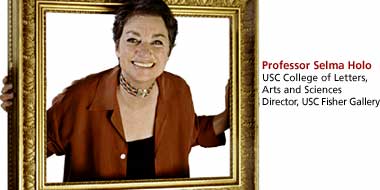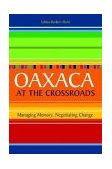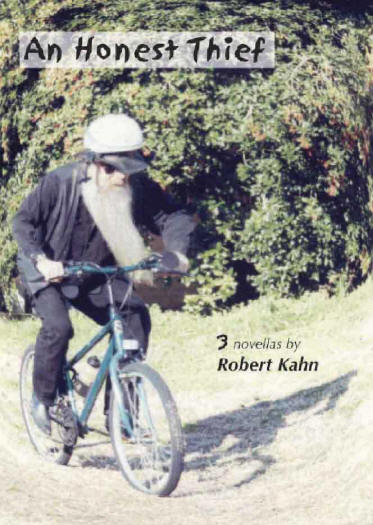
Making (Art) History
 The arrival of a newly published work of non-fiction is cause for celebration.
The arrival of a newly published work of non-fiction is cause for celebration.
A truly great piece of non-fiction is more than a simple dishing out of facts, figures and statistics. The author acts like a tour guide, filtering unfamiliar sights and sound through her experience.
Selma Holo's new book, "Oaxaca at the Crossroads; Managing Memory, Negotiating Change" was just published by Smithsonian Press in September 2004 and can be purchased at your favorite book store, or on Amazon.
I found this book hard to put down. As a person who spent seven years in Santa Fe, New Mexico, I could see many parallels between what is going on in Oaxaca City and what went down in Santa Fe, back in the seventies. For people who are concerned about the effects of a MacDonalds being built in the middle of your historic plaza, or the effects of a Walmart on local trade, this book will definitely give you something to ponder.
I will never forget the time that my sister, Selma Holo, and I toured the the Salinas National Monument outside of Albuquerque, N.M. Selma kept her attention firmly focused on the ruins and as well as the guide book.
“After the Indians disrupted the supply routes,” she said, “the Missionaries became so hungry they boiled their shoes and ate them,” she said as we walked beside the majestic walls of an old Spanish Mission.
Another time, when I was a junior at St. John's College in Santa Fe, New Mexico, my sister was invited to give a Friday night lecture. She chose to talk about "crouching Aphrodites," a sculptural theme found throughout the ages. Afterwards, the students were so inspired by her lively speech they lined the corridor outside the Great Hall and sat posed as couching Aprodites.
My sister knows how to make art history come alive.
Selma Holo makes her living directing the Fisher Gallery at the University of Southern California. Prior to that she worked as curator of the Norton Simon Museum and also had close ties with the Getty Museum.
It is Selma’s job to help the rest of us make sense of our culture and she does it in a very lively and engaging fashion. She knows that the movers and the shakers in our world really moved and shaked and breathes life into the dry, musty history of art.
Although she doesn’t have her own show on PBS (yet) she recently left her mark on the art world with her book, "Beyond the Prado: Museums and Identity in Post-Franco Spain" published by the Smithsonian Press in 1999.”
And now, for the shameless plug: If you are looking for the perfect gift for that someone special, I don’t think you can do better than getting them a copy of my sister’s new book!
  An Honest Thief A book review by Charles Reuben shawnee@unm.edu |
I first met Robert Kahn during the winter of ’03 in the observation car of the Southwest Chief. He had reserved a seat in coach and was en route to Vermont to, as he put it, “see the love of my life, whom I have seen only once, briefly, in the past thirty-one years.”
At that time Bob wrote the editorial page of the North County Times in Escondido, California.
We hit it off nicely and he bought me a bottle of Cabernet Sauvignon and I gave him one of my sleeping pills. Bob was suffering from lack of rest, a malady common to those who are new to cross-country train travel.
Bob told me that his last plane ride was on Sept. 10, 2001. He said he decided to stop flying for good after reading wire stories about the last cell phone calls passengers made to their spouses before their planes slammed into the twin towers.
During our conversations in the observation car, Bob told me that he was about to come out with a new book called “An Honest Thief.” I promised him I would buy a copy. “Buy two, they’re small,” he said, “Hell buy four --- they make a good doorstop.”
So I waited and waited for Bob’s book to come out. In the meantime I sent him a 3,000-word story about the train trip that we had shared. Between the courtship with the Vermont lady and his job, he was able to set aside a good block of time to edit my story.
Bob’s comments were lively and animated, like, “(YOU CAN DO BETTER THAN THIS LAST SENTENCE. GIVE ME A SIMILE OR A METAPHOR.)” and “(GIVE ME A METAPHOR, DON’T COUNT THE PEOPLE)” and “(FINALLY -- LANDSCAPE. THAT’S WHAT THEY PAY TO SEE. SHORT DESCRIPTIONS LIKE THIS ARE BEST. BUT YOU COULD THROW IN A FEW MORE, INSTEAD OF THE GENERIC HUGE MANSIONS).”
In the end all he got from me for his efforts was a poetry book and a novella that I had written, but he would have done it for nothing: What a guy.
Robert Kahn’s book finally found it’s way into print and I bought a copy. It’s a slick publication that can be had for ten bucks or so.
“An Honest Thief” is a delightful collection of short stories that not only makes an excellent “read” but also contains the kind of polished writing that every aspiring and established author should carefully study. Bob is a newspaper editor, reporter and editorial writer. His prose is not just eminently readable, but grammatically correct and economically stated. (In a recent column he told his readers how he would send the rejection letters he received from publishers back to their senders, with corrected grammar and some choice words.)
In “An Honest Thief” Bob is out to tell the reader several stories and he accomplishes this task masterfully. Since he tells his stories using first person narrative it’s almost like reading a memoir or listening to a titillating confession, masterfully told, in the spirit of Doestovesky or Salinger.
Bob intersperses his engaging tales with his own riveting philosophy that only makes the pages turn quicker, “ . . . habitual drug use keeps you from growing up,” he writes. “You remain an adolescent forever: spoiled, impatient and uncomprehending. Terminally unique, you think. You’re just like every other alcoholic, but you don’t know it, sitting in the center of your little universe, self-contained, pouring things in, turning things off.”
There is nothing hollow about the characters in “An Honest Thief.” They are flesh and blood, passionate incarnations of living, breathing human beings that are involved in unusual activities like collecting rare birds or living the life of a thief while they cheat on their wives and contemplate murder.
Some time ago I received perhaps the greatest gift that one writer can bestow upon another. One day, out of the blue, I received an e-mail from him. “I have decided to immortalize you in my latest online column,” he said.
Now that I am about to be laid off from my job at the University of New Mexico after 11 years of faithful service, I find his words reassuring:
On a train trip across the country last year I met a man named Chuck Reuben. As we watched the land go by out the windows of the sightseeing car, we talked about our lives as though we were old friends. We compared personal disasters.
“I cherish all my catastrophes,” he said.
That’s the spirit.
(Robert Kahn moved to Vermont and married the love of his life. His book, “An Honest Thief” is published by Livingston Press and can be purchased through Amazon.com. Bob makes a living editing “The Courthouse News” at www.courthousenews.com )
|
|


